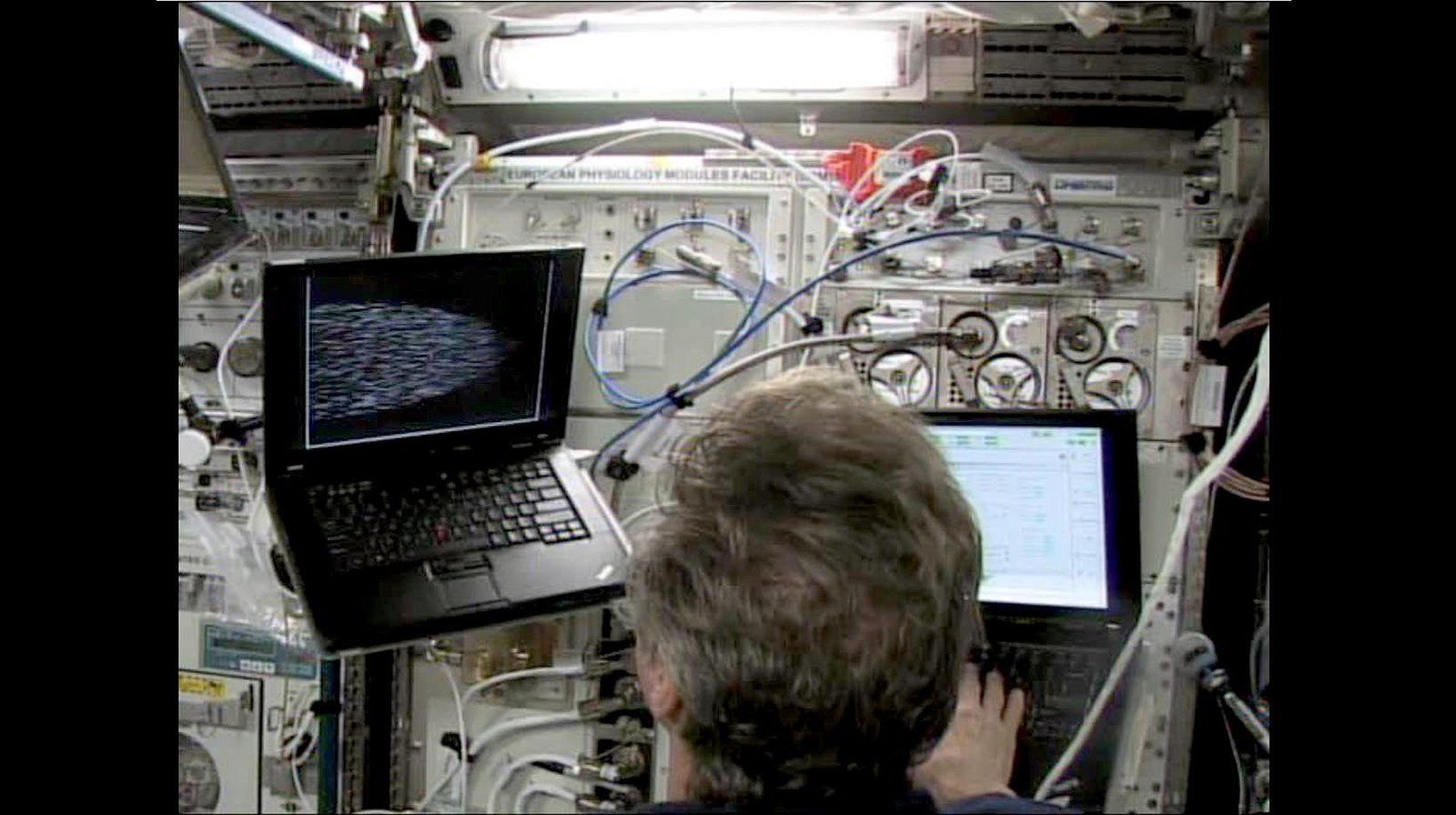Plasma research – new laboratory on the ISS in operation



The International Space Station (ISS) offers a unique opportunity to conduct research in microgravity. Its newest research system – the PK-4 plasma crystal laboratory – has now begun scientific operations in the Columbus module. The Complex Plasmas Research Group at the German Aerospace Center (Deutsches Zentrum für Luft- und Raumfahrt; DLR) has tested and confirmed the functional capability of the laboratory unit. While preparing for the forthcoming experiments, the team has also acquired the first scientific data.
"After over a decade of planning, designing, manufacturing and qualification, we have now finally reached the point where the science phase can start. We are extremely grateful to the entire development team at the Max Planck Institute for Extraterrestrial Physics in Garching and OHB in Munich. Together, we have created a large-scale laboratory on Columbus that will hopefully enable us to carry out excellent science for many years," says Hubertus Thomas, Head of the DLR Research Group Complex Plasmas.
The PK-4 laboratory is fully operational – to the twofold delight of the researchers. This is because, not only is the group responsible for scientific management of the experiments (in tandem with a Russian partner institute), but also for the development of the apparatus itself. Hence, Thomas and his colleagues are using the initial tests with the laboratory for reference measurements. These will help the researchers understand the apparatus better under the special conditions of microgravity. They also plan to further automate the experimental process based on comparison data. They were supported by Russian cosmonaut Gennady Padalka on board the ISS.
Congestion in the Columbus module
The man on site had the delicate task of activating the measurement acquisition at the right moment. A command from the scientists in the control centre might not arrive at the laboratory at the right time. Data transfer between the Space Station and Earth is delayed by at least five seconds. Therefore, Padalka had to take on the role of experimenter. In doing so, he demonstrated skilful timing – effortlessly capturing the fast moving particles in the plasma. Luckily, he had already worked on the two previous plasma research laboratories on the ISS. The Russian’s experience paid off, to the complete satisfaction of the scientists.
The spectacular images of the plasma experiments also attracted the attention of the other cosmonauts and astronauts present in the Columbus Laboratory. For a moment, they gathered around the PK-4 video monitor and watched as a stationary particle cloud suddenly transformed into a shear flow. This occurred when Padalka (with help from the control centre) directed a powerful laser beam into the complex liquid plasma to conduct the measurements.
Virtual laboratory on Earth
The plasma crystal laboratory enables observation of the movement of individual particles in microgravity. Physical processes occurring at the atomic or molecular level become visible and can be investigated in a targeted manner. The next PK-4 experiments are expected to determine, among other things, particle charges and ion drag forces. These figures are essential for understanding the experiments on the ISS.
With PK-4, the Complex Plasmas Research Group is operating a laboratory on the ISS for the third time. The use of a virtual ‘telescience’ unit however, is completely new this time. The system is identical to the apparatus on board the ISS and is connected to it virtually. Until now, Thomas and his team have only been able to follow the experiments on a screen and have had to guide the experimenter on site via audio contact. Now, they can observe what is happening in the ‘real’ laboratory with their own eyes – and modify the sequence if necessary. Taking into consideration the delay in data transfer, the scientists can adapt the experiments to an altered situation for the first time.
The laboratory is controlled from Toulouse, at the CADMOS control centre (Centre d'aide au développement des activités en micro-pesanteur et des opérations spatiales). The DLR Space Operations and Astronaut Training (RB) at the DLR site in Oberpfaffenhofen is responsible for working with the cosmonauts and astronauts on communication and resource planning. The plasma crystal laboratory is now expected to be operated on the ISS for at least four years. Following the successful preparations, the DLR research group is also planning the next step – the start of the scientific experiments. This is scheduled for autumn of this year.
About the project
The PK-4 plasma crystal laboratory is a joint collaboration between the European Space Agency (ESA) and the Russian space agency, Roskosmos (englisch), with scientific leadership by the DLR Research Group Complex Plasmas (formerly at the Max Planck Institute for Extraterrestrial Physics; MPE) and the Joint Institute for High Temperatures (JIHT) of the Russian Academy of Sciences. The experimental hardware was developed by the research group during their time at MPE, in cooperation with OHB System AG (formerly Kayser Threde). PK-4 is financed by the European Space Agency (ESA) and Roscosmos. Additional funding for the project in Germany came from the The German Space Agency at DLR and the Max Planck Society.
